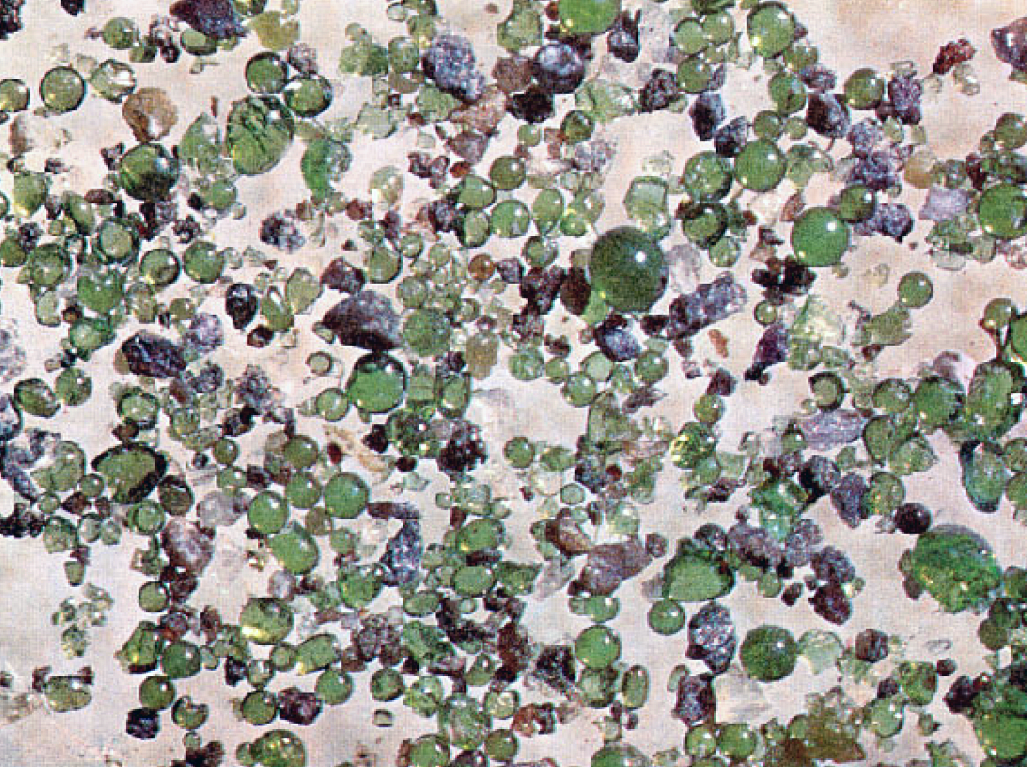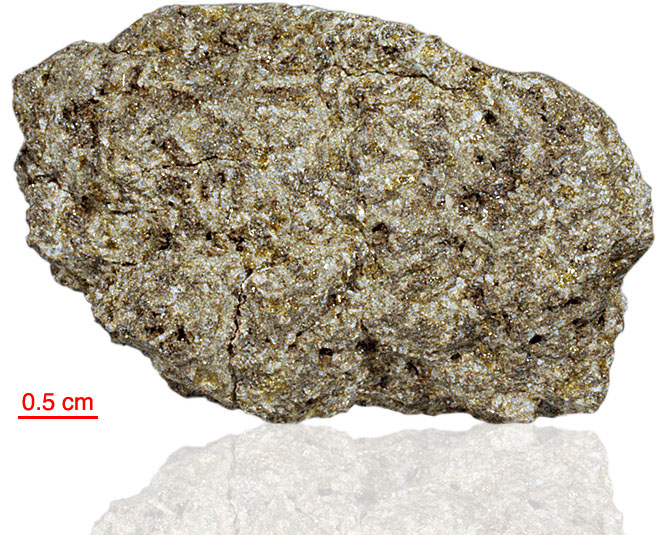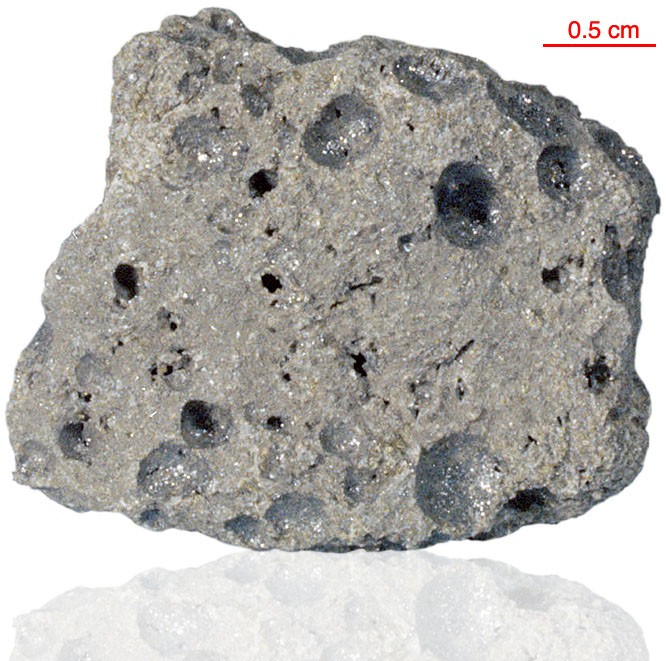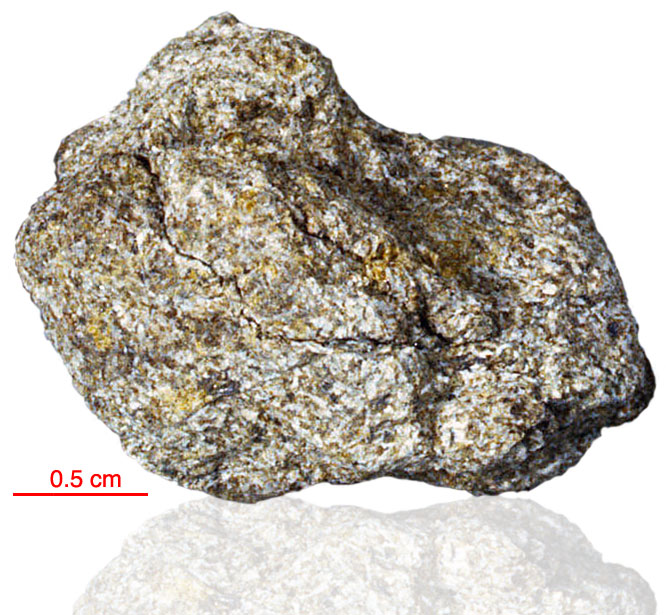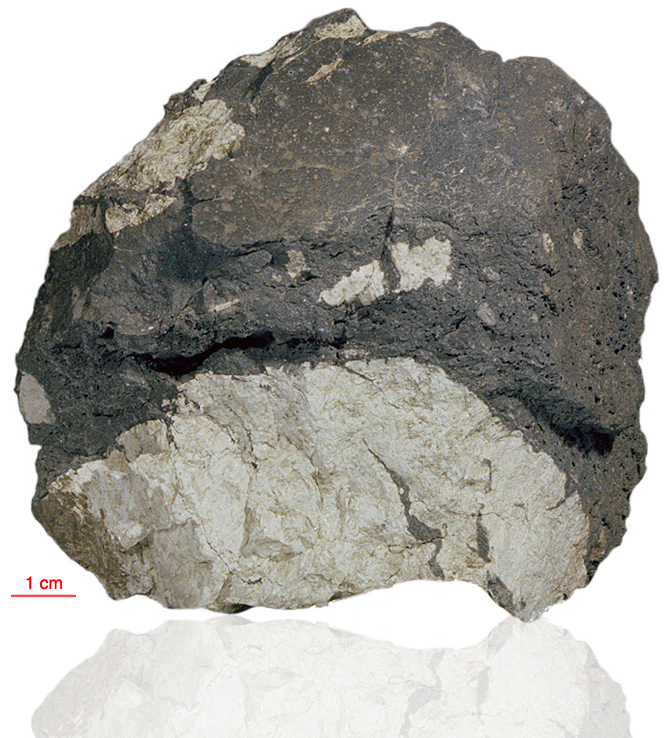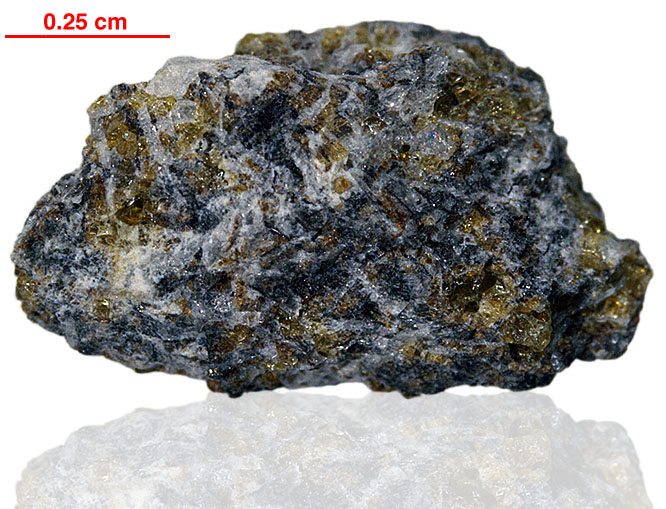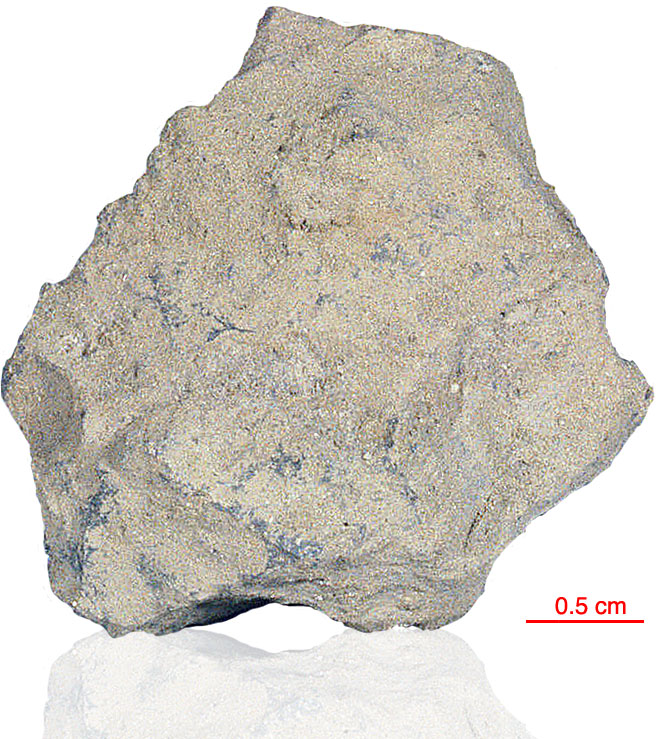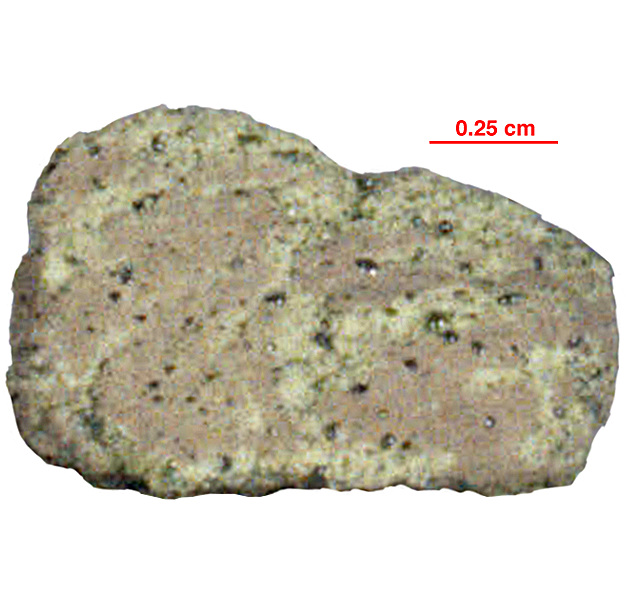
Fact sheet
Clods of green glass (numbered 15365 to 15377) were collected as part of a rake sample around Spur crater and the “soil” from this bag (15310 to 15314) also contained a lot of green glass fragments due to abrasion. Other clods were grouped and numbered 15425-15427. A large soil sample (15300-15304) was also found to contain numerous green glass spheres and green glass clods. Various soils, regolith breccias and cores from this site also contain an abundance of the same, green glass beads. Some portions of the green glass clods are nearly pure green glass, but other portions of these clods also contain various amounts of local (grey) regolith. Quenching experiments suggest the glass was formed by volcanic fire-fountaining. Dark brown glass fragments contain indistinct olivine dendrites.
The combined sample weighed ~500 grams before analysis and has been dated at 3.38±0.06 billion years (Ar/Ar).
Further details of this and other Apollo samples are here: http://curator.jsc.nasa.gov/lunar/
The Apollo 15 landing site was in the Apennine Highlands, and close to Hadley Rille — a long, narrow winding valley. Approximately 76 kg of lunar material, including soil, rock, core-tube and deep-core samples, were returned to Earth.
This mission was the first flight of the Lunar Roving Vehicle which allowed the astronauts to venture further from the Lunar Module than in previous missions. During three periods of extravehicular activity, or EVA, on July 31st, and August 1st and 2nd, Scott and Irwin completed a record 18 hours, 37 minutes of exploration, travelling 17.5 miles, in the first car that humans had ever driven on the Moon.
Apollo 15 was launched on 26 July 1971.
